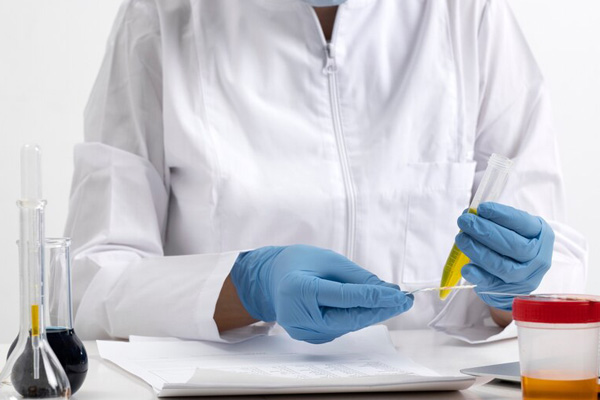- June 25, 2024
- Mubarak Medical Complex
- Comment: 0
- Uncategorized
A pee routine test, frequently alluded to as urinalysis, is a typical symptomatic device used to evaluate in general wellbeing and recognize many problems. The following are 10 significant things you ought to be familiar with a pee routine test:
1.Reason: The main role of a pee routine test is to check for indications of normal illnesses or conditions like urinary plot contaminations (UTIs), kidney sickness, diabetes, liver infection, and other metabolic circumstances.
2.Parts: A urinalysis regularly includes three principal parts:
Visual assessment: Reviewing the pee’s tone and lucidity.
Synthetic assessment: Utilizing test strips to identify substances like glucose, protein, ketones, bilirubin, and nitrites.
Minuscule assessment: Inspecting pee residue under a magnifying instrument to search for cells, precious stones, microscopic organisms, and different substances.
3.Readiness: For the most dependable outcomes, it’s frequently prescribed to stay away from specific food sources and drugs before the test, and to gather the main pee of the day (halfway example) to get a more thought example.
4.Assortment Technique: The halfway perfect catch strategy is regularly used to gather a pee test. This includes cleaning the genital region, starting to pee, and afterward gathering pee halfway in a sterile holder.
5.Deciphering Variety and Lucidity: Ordinary pee is regularly clear and ranges from light yellow to profound golden. Unusual tones (e.g., red, brown, or green) and darkness can demonstrate different circumstances, like parchedness, liver illness, or diseases.
6.pH Levels: The pH level of pee demonstrates its corrosiveness or alkalinity. Ordinary pee pH goes from 4.5 to 8. Strange pH levels can propose different medical problems, for example, kidney stones or contaminations.
7.Explicit Gravity: This actions the grouping of pee and shows the kidney’s capacity to think or weaken pee. Typical explicit gravity goes from 1.005 to 1.030.
8.Presence of Proteins and Glucose: Proteins (proteinuria) and glucose (glucosuria) in pee can be indications of kidney illness, diabetes, or other metabolic problems.
9.Infinitesimal Investigation: This piece of the test searches for cells, precious stones, projects, and microorganisms. For instance, the presence of red or white platelets can demonstrate contamination or kidney illness, while gems might propose kidney stones.
10.Follow-Up: Strange outcomes frequently require further testing and assessment. On the off chance that a urinalysis demonstrates conceivable medical problems, extra tests, for example, blood tests, imaging review, or more unambiguous pee tests might be important to analyze the basic condition.
Customary urinalysis can be an important piece of routine medical services, assisting with identifying potential medical problems early and oversee progressing conditions really.


